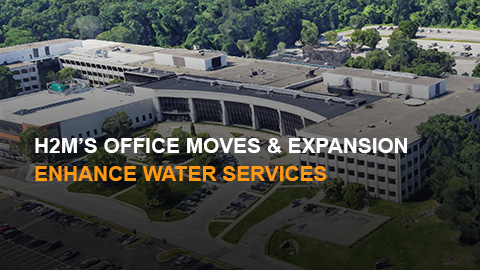The Route to Electrification: Frequently Asked Questions
As school districts prepare for the electrification of their school bus fleets, there are naturally many questions that arise. Below are several questions H2M receives frequently, along with our answers, to help guide this process.
What is the typical range of an electric bus?
Current models of electric buses have a maximum range of 100-120 miles, with options for additional upgrades to the battery pack to gain additional range. Weather conditions and elevation changes can reduce the mileage by up to 10% each.
How long does the battery last before needing to be replaced?
Manufacturers estimate that their batteries will last 12-15 years, however the drive cycle, district behavior, charging infrastructure, and charge management will impact the expected life cycle.
A vehicle-to-grid (V2G) service may be able to extend the battery life by as much as 60% if the battery is kept at a medium-stage charge.
New all-electric school buses are required to have a vendor-supplied battery warranty of at least 60 months or 75,000 miles. Keeping the battery above 20% can prevent early degradation. Battery degradation would typically be around 2% per year.
Lease or Buy?
Purchasing EV buses comes with a higher price tag but offers long-term savings in maintenance and fuel costs. The laws have allowed the extension of financing from five to 10 years to help spread the increased cost of purchasing an EV bus over a longer term. With no historical data related to resale value, long-term amortization will be challenging.
Leasing spreads out the upfront cost of transitioning and allows school districts and operators to easily switch to the latest models and technology as they come out. However, leasing buses will have a larger total cost, determining residual value in the lease remains a challenge, and leasing does not help with upfront cost of required infrastructure.
Which Electric Vehicle Supply Equipment (EVSE) do I need for level 2 or level 3 Direct Current Fast Charging (DCFC)?
EVSE selection is dependent on battery specifications, duty cycle (e.g. route demands, distance, speed, terrain, number of stops), and budget.
Level 2 charging takes more time and may require overnight charging. Fast charging takes less time but may reduce battery life and is approximately 8-10 times the cost of level 2 charging. Fast charging may also result in demand charges.
Then there is also the decision of managed or unmanaged charging. Unmanaged charging is defined as plugging in the vehicle until fully charged and then unplugging it. Unmanaged is the cheaper of the two options but lacks control over charging times and number of buses. Alternatively, managed charging uses software to determine the best charge times. The managed options currently being developed and deployed come with an upfront and recurring cost, but provides increased control over charging time, reducing demand charges, and stand-by power.
Will I have to expand or contract the fleet management team?
Electric battery buses have fewer parts and require less maintenance when compared to their diesel counterparts. As a result, the need for labor will vary greatly based on fleet size, route length, charging infrastructure, access to incentive funds, budgeting, ownership, or service agreement decisions.
When making fleet management HR decisions, consider the management of service and repair response times, the amount of time that the charger is operational (uptime) or disabled (downtime), updates to the software and hardware, spare parts, and warranties.
NYSERDA’s Truck Voucher Incentive Program (TVIP) requires that new electric school buses have a vendor-supplied battery warranty of at least 60 months or 75,000 miles and that manufacturer/vendor repair support must occur within 48 hours of a repair request.
In any case, New York State law requires school districts and private contractors to put together detailed workforce development plans that ensure that no employee who agrees to retraining will face being laid off.
What effect will transitioning have on current transportation contracts?
Contractors’ fleets will be subject to the same mandate and infrastructure needs as school district fleets. Any contract that will overlap with the start of the mandate will need to include terms and conditions reflecting the operating and financial elements of mandating and using electric buses.
The cost of electric buses and infrastructure will be passed through to school districts with the potential to make it harder for smaller contractors to adapt and change.
What manufacturers will be able to meet the increase in demand for EV school buses?
Bus manufacturers are currently producing and have plans to expand production to meet growing mandate-driven demand in New York and California. Examples include:
- Blue Bird: Four EV buses per day at Fort Valley, GA with plans to increase production to 20 per day in 2023
- Lion Electric: 2,500 buses per year at their Canada manufacturing plant and 20,000 buses per year at their Chicago manufacturing facility in 2023
- Green Power Motor Company: Opened a West Virginia manufacturing plant to assemble Type A and Type D school buses for the U.S. market
Is there a “made in America” requirement?
The NYSERDA Truck Voucher Program requires the final assembly of eligible vehicles must take place in the U.S. and must consist of significant value and effort. For a vehicle to be listed as eligible, its Original Equipment Manufacturer (OEM) or Uplift/Retrofit Manufacturer (URM) must submit documentation to NYSERDA regarding the location, actions performed, and total value of final assembly.
Is it true that EV buses are not fully zero emissions vehicles?
Auxiliary loads that support the heating, ventilation, and air conditioning demands can have varying impacts on bus energy consumption and range. Some estimates state that HVAC systems can draw up to 30% of battery capacity in climate extremes.
Diesel and propane HVAC system add-ons are available, but they produce emissions. While these add-ons may be needed in some cases, the need for fossil-fuel powered systems will not be necessary.
What is a disadvantaged or high needs school district?
Under the New York State Truck Voucher Incentive Program (NYSTVIP), a Disadvantaged Community (DAC) is defined as: 1) a census block that is in the top quartile of the U.S. Department of Housing and Urban Development (HUD) 50% area median income (AMI) thresholds, 2) located within a Department of Environmental Conservation (DEC) Potential Environmental Justice Area, and 3) located in a New York State Opportunity Zone.
Under the Diesel Emissions Reduction Act (DERA) and Environmental Protection Agency (EPA) grant and rebate programs, “high needs” is defined as a school district listed in the Small Area Income and Poverty Estimates (SAIPE) School District Estimates for 2020 or self-certify as having 20% or more students living in poverty pursuant to the federal poverty threshold.
The voucher amount is provided to fleets by the contractor at the point of purchase in the form of a discount off the total purchase price, making EV acquisitions easier, less expensive, and help to distribute the benefits of EV deployment within New York State. NYSERDA will not make a voucher payment unless all requirements for voucher redemption are met and approved by NYSERDA.
Can funds from Federal programs be combined with funds from state programs to make EV bus purchases?
NYSTVIP funds cannot be combined with funds from the NYSERDA Clean Green School funding opportunity to reduce the price of a bus by more than the maximum voucher amount.
No other Federal funds or Volkswagen (VW) Environmental Mitigation Trust funds can be used on the same bus replacement project as the 2021 DERA School Bus Rebate funds or the EPA’s Clean School Bus Program.
Are there minimum use requirements for new or scrapped vehicles?
Yes. The NYSERDA Truck Voucher Program has new school bus-in service requirements of more than 8,000 miles per year during the five-year in-service period and an annual in-service requirement of more than 2,500 miles over the least one of the past two years for vehicles being scrapped.
Additionally, new replacement school buses must operate 95% within New York State and 70% within the identified school district(s).
What are the reporting requirements?
NYSERDA requires semi-annual usage reporting on the following for each vehicle for three years following voucher payment:
- Odometer readings or equipment hours of use
- Infrastructure or capital investment information
- The amount of electricity used for battery charging (kWh)
- Maintenance and repair information
- Vehicle downtime due to maintenance and repair
- Feedback from drivers/users of battery electric vehicles
What happens if your fleet is not compliant by 2035?
The deadline for new purchases or leases can be extended for two years post the 2027 deadline through an application for waiver. The full fleet electrification deadline is 2035.

